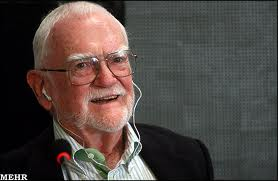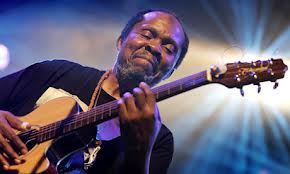This list could have been even longer, but here's part one of my four-part list covering some of the many people whose passing this year, whose lives, and whose legacies, were given far too short a shrift by far too many in the mainstream media.
 40. David N. Martin
40. David N. Martin
It remains the single most iconic and successful tourist and travel campaign of all time; one that predated the long-standing and lionized I Love New York campaign by almost a full decade – and, in fact, may have inspired it. As originally conceived by one of the copywriters in his small Richmond agency, the campaign’s original slogan was to have read, Virginia is for (History) Lovers, or Virginia is for (Mountain) Lovers, or any other of a half dozen or so variations, depending upon the treatment. But right before their presentation meeting with the client, the agency's co-founder and creative head Martin asked his art department kill the interchangeable words in all the various treatments and asked his account team to let the only slogan they use in the meeting be simply, Virginia is for Lovers. And almost 43 years and nearly $200 billion tourist dollars ago, that's exactly what they did.
 39. Frank Pierson
39. Frank Pierson
Early in his career the Oscar-winning screenwriter wrote episodes for classic TV series like Playhouse 90, Have Gun Will Travel and Route 66, and later wrote one of the most critically acclaimed episodes in the history of Mad Men, in which the two most proper members of the senior staff, Pete and Lane, get into fisticuffs during a staff meeting over a pitch for the Jaguar account. But in between Pierson carved out for himself more than a slice of pop relevance by conceiving and then writing the dialogue for two of the most storied movie scenes ever committed to film, Al Pacino’s “Attica” rant in Dog Day Afternoon and Strother Martin’s seething retort to the sardonic line “Wish you'd stop bein' so good to me, cap'n" in Cool Hand Luke. After Luke sasses him following his latest failed escape attempt, Martin’s sadistic and barely literate chain gang captain strikes him savagely with a club and then tries to collect himself even as his spits out to the other prisoners through clenched teeth and watery eyes what the AFI calls the 11th most memorable line in movie history, a line Pierson had to fight to have included in the final edit of the film: What we’ve got here is failure to communicate.
38. Don Cornelius
Some might argue Cornelius’ passing got plenty of notice and that he was an pop and soul icon who got more than his share of accolades in the national media. But that’s the point. He was a household name and was a fixture on TV for nearly four decades. And in the process of becoming so famous, and so well-exposed, he was able to shine a light onto not so much black music (which he did), but black culture – especially young black culture.  And by doing so he gave white kids all across America a glimpse into a world about which we, frankly, knew very little. Suddenly for millions of us – many from all-white and incredibly sheltered middle-class neighborhoods – we saw something in those black kids as they joyously danced and carried on each week that sure felt a lot more like how we viewed ourselves than what we saw every time we watched those kids on American Bandstand – kids who seemed to be, I don’t know, just so much more restrained and self-aware. As black culture and American pop culture continue to merge and become one in this country, I’m not so sure that generations from now sociologists and cultural historians won’t point to Soul Train, even more than Motown, as the point at which the two started to meld into one, and won’t credit Cornelius as the guy who got the ball rolling – or at least in his case, line dancing.
And by doing so he gave white kids all across America a glimpse into a world about which we, frankly, knew very little. Suddenly for millions of us – many from all-white and incredibly sheltered middle-class neighborhoods – we saw something in those black kids as they joyously danced and carried on each week that sure felt a lot more like how we viewed ourselves than what we saw every time we watched those kids on American Bandstand – kids who seemed to be, I don’t know, just so much more restrained and self-aware. As black culture and American pop culture continue to merge and become one in this country, I’m not so sure that generations from now sociologists and cultural historians won’t point to Soul Train, even more than Motown, as the point at which the two started to meld into one, and won’t credit Cornelius as the guy who got the ball rolling – or at least in his case, line dancing.
37. Arthur Ochs Sulzberger
They are a dying breed; the family-run newspaper empires, located in major cities, with clout that at one time could take down a corrupt politician, however powerful, even a president, and each one run by a second- or third-generation  publisher with journalistic righteousness in his or her heart and printer’s ink in his or her veins. And one by one they’re now leaving us to try to make sense of the media landscape they used to control so utterly and shape so completely, a landscape now being slowly and perhaps irretrievably polluted by a steady stream of instantaneous quasi-news and self-serving digital tripe, as well as a new breed of unchecked, unedited, sourceless online journalist armed with little more than an internet connection, a keypad and, more often than not, an agenda; the L.A. Times’ Otis Chandler, the Washington Post’s Katherine Graham, and now the New York Times’ Arthur Ochs Sulzberger. Sulzberger, who relinquished day-to-day operations of the Times to his son in 1997, led the paper as it went all the way to the Supreme Court in 1971 in its winner-take-all battle with the Nixon administration for the right to publish what were then being called the Pentagon Papers. The Times won that decision, of course, as well as a remarkable 31 Pulitzer Prizes under Sulzberger's long and distinguished stewardship as publisher. But now, sadly, the once proud and powerful paper he ran so confidently finds itself struggling to retain not only its distribution, its readership and its advertisers, but perhaps saddest of all, its prestige.
publisher with journalistic righteousness in his or her heart and printer’s ink in his or her veins. And one by one they’re now leaving us to try to make sense of the media landscape they used to control so utterly and shape so completely, a landscape now being slowly and perhaps irretrievably polluted by a steady stream of instantaneous quasi-news and self-serving digital tripe, as well as a new breed of unchecked, unedited, sourceless online journalist armed with little more than an internet connection, a keypad and, more often than not, an agenda; the L.A. Times’ Otis Chandler, the Washington Post’s Katherine Graham, and now the New York Times’ Arthur Ochs Sulzberger. Sulzberger, who relinquished day-to-day operations of the Times to his son in 1997, led the paper as it went all the way to the Supreme Court in 1971 in its winner-take-all battle with the Nixon administration for the right to publish what were then being called the Pentagon Papers. The Times won that decision, of course, as well as a remarkable 31 Pulitzer Prizes under Sulzberger's long and distinguished stewardship as publisher. But now, sadly, the once proud and powerful paper he ran so confidently finds itself struggling to retain not only its distribution, its readership and its advertisers, but perhaps saddest of all, its prestige.
 36. Neil Reed
36. Neil Reed
Even speaking his name may still be akin to blasphemy in certain parts of Indiana and his mug no doubt remains on dartboards in bars, taverns and game rooms throughout the Hoosier State, because what he did was akin to, I don’t know, maybe going to school in Pennsylvania and claiming Joe Paterno was complicit in covering up the molestation of young boys. What Neil Reed did in 2000 was help set the stage for what was then considered the unthinkable: the firing of revered coaching legend and basketball god Bobby Knight. In that year, Reed contended he had once been choked by the volatile Knight during a ‘97 basketball practice, something Knight vehemently denied. But soon video footage of the coach with his right hand clearly and aggressively around Reed’s throat at practice made its way onto CNN/SI and compelled then-Indiana University president Myles Brand to institute a “zero-tolerance” policy with respect to the hot-headed Knight. A few months later, after he grabbed the arm of a student who asked him flippantly, “Hey Knight, what’s up?” the coach was fired; an outcome that Reed said not only hurt him because he liked Coach Knight, but one that, in the end, would end up dogging the young man for the remainder of his all-too-brief life.
 35. Warner Fusselle
35. Warner Fusselle
For a few years, the voice of This Week in Baseball, a weekly syndicated series that in those dark days before cable, SportsCenter and the MLB out-of-market package served as a junkie’s only access to a regular dose of diamond highlights and bloopers. While history may remember Mel Allen as the voice of the show, for many it was in the two or so years after Allen’s death, when the producers used Fusselle, also a dulcet-toned Southerner, to narrate writer’s Ouisie Shapiro’s poetic scripts – while still employing a stirring piece of classical fanfare titled “Gathering Crowds” for its closing credits – that TWiB hit its creative stride and earned a place, if only for the briefest of moments, alongside the best stuff being churned out by NFL Films.
34. Larry Stevenson
In 1969, in an attempt to provide young people a way to brake, turn or maneuver without bending down and touching their skateboards, the entrepreneurial founder of Makaha  Skateboards, Larry Stevenson, decided to add a slight incline on the back of his boards which would later become known in the trade as a kicktail. Once a boarder named “Ollie” Gelfand learned how to leverage the kicktail to launch his board skyward and invented a move now commonly known as the ollie, the skateboard quickly went from a kid’s toy and just another fad to a full-blown cultural phenomenon, if not an out-and-out lifestyle choice. Imagine what Les Paul’s electrical plug-in did for the six-string guitar, Walt Disney’s color and artistry did for the animated short, or John T. Thompson’s detachable circular clip did for the repeating rifle. That’s what Stevenson’s upturned backside did for the skateboard.
Skateboards, Larry Stevenson, decided to add a slight incline on the back of his boards which would later become known in the trade as a kicktail. Once a boarder named “Ollie” Gelfand learned how to leverage the kicktail to launch his board skyward and invented a move now commonly known as the ollie, the skateboard quickly went from a kid’s toy and just another fad to a full-blown cultural phenomenon, if not an out-and-out lifestyle choice. Imagine what Les Paul’s electrical plug-in did for the six-string guitar, Walt Disney’s color and artistry did for the animated short, or John T. Thompson’s detachable circular clip did for the repeating rifle. That’s what Stevenson’s upturned backside did for the skateboard.
 33. Vidal Sassoon
33. Vidal Sassoon
It wasn’t so much that he branded his hair-care line so expertly, or instilled in it an exotic cache that, frankly, had been lacking for so long in so many American-made beauty products. It was that he almost single-handedly invented all those cut-and-go, short angular female hairstyles that seemed to be everywhere in the decade of the 60s. Think Twiggy. Think Mia Farrow in Rosemary's Baby. Think Barbara Feldon as Agent 99. Think Goldie Hawn and Judy Carne on Laugh-In. Forget love beads, Nehru jackets, go-go boots, striped bell-bottoms and wide-collared paisley shirts. The most enduring and ultimately timeless look of that often garish and sometimes embarrassing decade may just have been all those daring, exotic, attitude-rich and ever-so-naughty Vidal Sassoon-inspired women’s hairstyles.
32. Terry Callier
The Brits continue to remind us how clueless we Yanks can sometimes be when it comes to music. Terry Callier tried for years to make a living in the U.S. as a genre-defying  African American singer-songwriter, a la Bill Withers. A little bit jazz. A little bit folk. A little bit soul. A little bit gospel. A little bit funk. Even a little bit country. But we wanted no part of it. Finally after six brilliant but commercially failed albums between ‘68 and ‘78 he quit music altogether, got sole custody of his daughter, and supported her as a computer programmer at the University of Chicago. It wasn’t until some DJs in England discovered him nearly two decades later and began sampling and mixing some cuts off his old vinyl albums, that Callier decided to give his first love another shot – this time in the U.K. The result was some of the most moving and satisfying music of his career, and he lived out his days shuttling back and forth between Chicago and the British Isles, where he emerged as something of a cult sensation, not to mention an in-demand collaborator with a number of appreciative and often awe-struck young British musicians.
African American singer-songwriter, a la Bill Withers. A little bit jazz. A little bit folk. A little bit soul. A little bit gospel. A little bit funk. Even a little bit country. But we wanted no part of it. Finally after six brilliant but commercially failed albums between ‘68 and ‘78 he quit music altogether, got sole custody of his daughter, and supported her as a computer programmer at the University of Chicago. It wasn’t until some DJs in England discovered him nearly two decades later and began sampling and mixing some cuts off his old vinyl albums, that Callier decided to give his first love another shot – this time in the U.K. The result was some of the most moving and satisfying music of his career, and he lived out his days shuttling back and forth between Chicago and the British Isles, where he emerged as something of a cult sensation, not to mention an in-demand collaborator with a number of appreciative and often awe-struck young British musicians.
 31. Earl Scruggs
31. Earl Scruggs
Rarely does one get to enjoy the greatest artist of his kind the world has ever seen or the greatest player in the history of his or her chosen instrument, but that’s what Earl Scruggs was, and that’s the man anyone who ever saw or heard him play had the privilege of beholding. Scruggs was not merely someone who elevated the five-string banjo into something more than a hillbilly instrument; he was its unparalleled, unprecedented and unquestioned master. Yes, someone like Bela Fleck is a banjo virtuoso who can often make his instrument do almost otherworldly things. But as the man who not only invented the claw-hammer picking style, but perfected it, Scruggs remains the single most artistically and historically significant banjo player of all time; bar none. What’s more, his Foggy Mountain Breakdown in Arthur Penn’s Bonnie and Clyde remains, arguably, the most daring and successful marriage of music and moving pictures in the history of American cinema.

Looking forward to the other 3 parts
T: The hard part is trying to determine who and what to leave out. Each obit keeps getting a little longer than the one before it. I need to rein myself in. Cheers.
[...] Overlooked deaths of 2012, Part I [...]
[...] Overlooked deaths of 2012, Part I [...]
[...] 2012′a under-reported deaths, Part One [...]
[...] 2012′s under-reported deaths, Part One [...]